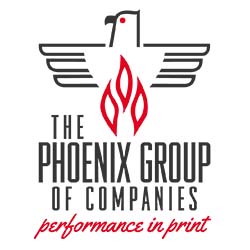Getting Print-Ready: The Key to Transforming Files to High-Quality Final Prints
Believe it or not, there’s more to achieving high-quality print products than working with an exceptional print provider. As a customer looking to obtain a flawless finished product, from print brochures and catalogs to product packaging and mailers, you want to make sure the files you provide are thoroughly prepared and will produce the end result you expect.
Reaching the Print-Ready Level
A print-ready file is one that meets all of your printer’s specifications required to produce a flawless finished print product. Print-ready files don’t need any alterations or intervention on the part of your printer and their team because they already meet the necessary specifications. To make your artwork or design look just as good (or better!) on paper as it does in a computer file, you have to ensure that it’s print-ready before passing the file along. Reaching this print-ready level often requires adjusting colors, proofreading, and ensuring what you share meets your printer’s specifications.
At the Phoenix Group, we handle files for more than 6,000 projects per year, and most of them have everything needed to produce the desired finished product. However, occasionally, files shared with us are missing certain elements or have been prepared in a way that won’t produce the best results.
Here are some of the biggest reminders we like to share:
- Make sure your file is delivered in the correct color mode (use CMYK, not RGB or 4/C) and review the document on a calibrated screen to confirm accurate colors for your design.
- Ensure that black text is made of only black color, not any CMYK or RGB colors.
- Review your fonts, images, and layout for cohesion and look out for content that may get cut off in the margins, extra unnecessary design layers, or issues with low resolution.
- Double ink separation is correct. For example, don’t include layers for Pantone colors if the job will be printed in CMYK only.
- All images and artwork should be at least 300 DPI.
- Clean up the final file you submit to your printer, deleting any extra files that aren’t part of the print job so the provider’s team can examine and complete orders quickly without questions.
Using a Print Quality Checklist
To avoid common pitfalls, try using a handy guide that covers several areas to ensure the perfect print-ready file. If you’re the point person for print management at your organization, sharing this document with other teams may also help minimize edits to files and revision costs.
The Phoenix Group has created a Print Quality Checklist with reminders and tips you can use to prep files for your printer. Download this helpful resource below and keep it nearby next time you gear up for a new project. And don’t hesitate to reach out to your printer to ask how you can ensure quality and speed up the production process. Understanding what role your provider and you (and your files!) play can help everyone collaborate effectively to produce beautiful finished print products.
If you’re interested in working with a print provider known for higher quality, get in touch with the Phoenix Group to explore our services and see how we work.
